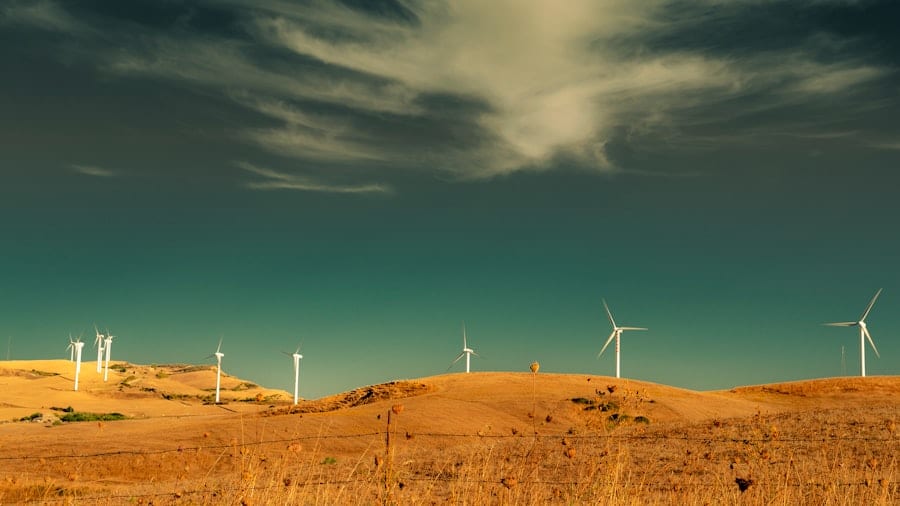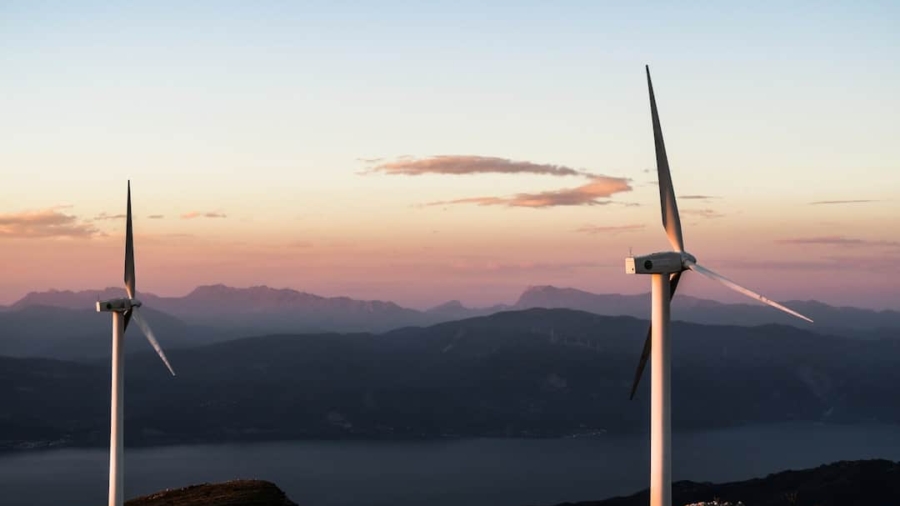The integration of artificial intelligence (AI) into the renewable energy sector has emerged as a transformative force, particularly in the optimization of wind farms. As the world increasingly turns to sustainable energy sources to combat climate change and reduce reliance on fossil fuels, wind energy has gained prominence due to its abundance and low environmental impact. However, maximizing the efficiency and output of wind farms presents a complex challenge that requires sophisticated solutions.
AI technologies, with their ability to analyze vast amounts of data and learn from patterns, are uniquely positioned to address these challenges. Wind farms consist of numerous turbines that operate under varying environmental conditions, making it essential to optimize their performance continuously. AI can enhance decision-making processes by providing real-time insights into turbine performance, weather patterns, and energy demand.
By leveraging machine learning algorithms and predictive analytics, operators can not only improve energy output but also reduce operational costs and enhance the longevity of equipment. This article delves into the multifaceted applications of AI in wind farm optimization, exploring its role in output enhancement, maintenance strategies, and the overall benefits it brings to the renewable energy landscape.
Key Takeaways
- AI plays a crucial role in optimizing wind farm operations by utilizing data and algorithms to improve efficiency and output.
- AI applications in wind farm output optimization include predictive maintenance, turbine control, and power forecasting to maximize energy production.
- AI applications in wind farm maintenance involve using predictive analytics and machine learning to identify potential issues and schedule maintenance proactively.
- The benefits of using AI in wind farm operations include increased energy production, reduced maintenance costs, and improved decision-making based on real-time data.
- Challenges and limitations of AI in wind farm optimization include data quality, algorithm accuracy, and the need for skilled personnel to interpret and act on AI-generated insights.
AI Applications in Wind Farm Output Optimization
One of the primary applications of AI in wind farm optimization is in enhancing energy output. Wind energy generation is inherently variable, influenced by factors such as wind speed, direction, and turbulence. AI algorithms can analyze historical weather data alongside real-time meteorological inputs to predict wind patterns more accurately.
For instance, machine learning models can be trained on extensive datasets that include past wind speeds and turbine performance metrics, enabling them to forecast future energy production with remarkable precision. This predictive capability allows operators to make informed decisions about when to maximize output or when to prepare for potential downtimes.
By employing techniques such as computational fluid dynamics (CFD) simulations combined with AI-driven optimization algorithms, operators can determine the most effective layout for turbines. This involves analyzing how wind flows through the farm and how each turbine interacts with its neighbors. For example, a well-optimized layout can minimize wake effects—where one turbine’s operation negatively impacts another’s—thereby enhancing overall energy capture.
Additionally, AI can facilitate real-time adjustments to turbine settings based on current wind conditions, ensuring that each turbine operates at its optimal capacity.
AI Applications in Wind Farm Maintenance

Maintenance is another critical area where AI is making significant strides in wind farm operations. Traditional maintenance practices often rely on scheduled inspections and reactive measures, which can lead to unexpected downtimes and costly repairs. AI introduces a paradigm shift through predictive maintenance strategies that leverage data analytics to foresee potential failures before they occur.
By utilizing sensors installed on turbines that collect data on vibration, temperature, and other operational parameters, AI systems can identify anomalies that may indicate impending mechanical issues. For instance, machine learning algorithms can analyze historical maintenance records alongside real-time sensor data to develop predictive models that assess the health of turbine components. If a particular turbine exhibits unusual vibration patterns that deviate from its normal operational baseline, the AI system can alert maintenance teams to investigate further.
This proactive approach not only reduces unplanned outages but also extends the lifespan of equipment by addressing issues before they escalate into major failures. Furthermore, AI can optimize maintenance schedules by analyzing weather forecasts and operational data to determine the best times for maintenance activities, thereby minimizing disruptions to energy production.
Benefits of Using AI in Wind Farm Operations
The adoption of AI in wind farm operations yields numerous benefits that extend beyond mere efficiency gains. One of the most significant advantages is cost reduction. By optimizing energy output and streamlining maintenance processes, operators can significantly lower operational expenses.
Predictive maintenance reduces the need for costly emergency repairs and minimizes downtime, which directly translates into increased revenue from energy sales. Additionally, AI-driven optimization can lead to better resource allocation, ensuring that investments are directed toward areas with the highest potential for return. Another key benefit is enhanced decision-making capabilities.
The vast amounts of data generated by wind farms can be overwhelming; however, AI systems can distill this information into actionable insights. Operators can make informed decisions based on real-time analytics rather than relying solely on historical trends or intuition. This data-driven approach fosters a culture of continuous improvement within organizations as they adapt their strategies based on empirical evidence rather than guesswork.
Furthermore, the integration of AI technologies can enhance collaboration among teams by providing a centralized platform for data sharing and analysis.
Challenges and Limitations of AI in Wind Farm Optimization
Despite the promising potential of AI in wind farm optimization, several challenges and limitations must be addressed for widespread adoption. One significant hurdle is the quality and availability of data. Effective AI models require large volumes of high-quality data for training purposes; however, many wind farms may lack comprehensive datasets or have inconsistent data collection practices.
Inaccurate or incomplete data can lead to suboptimal model performance and misguided decision-making. Additionally, there is a need for skilled personnel who can develop and maintain AI systems within the renewable energy sector. The intersection of AI technology and wind energy requires expertise in both domains, which may be scarce in some regions.
Organizations must invest in training programs or partnerships with academic institutions to cultivate a workforce capable of harnessing AI’s full potential.
This lack of transparency can hinder trust among stakeholders who may be hesitant to rely on automated systems for critical operational decisions.
Case Studies of Successful AI Implementation in Wind Farms

Several case studies illustrate the successful implementation of AI technologies in wind farms around the world. One notable example is Ørsted’s Hornsea One project in the United Kingdom, which utilizes advanced machine learning algorithms to optimize turbine performance and predict maintenance needs. By analyzing data from over 100 sensors installed on each turbine, Ørsted has been able to enhance energy output while reducing maintenance costs significantly.
The predictive maintenance model developed through this initiative has led to a 20% reduction in unplanned downtime compared to traditional methods. Another compelling case is that of GE Renewable Energy’s Digital Wind Farm initiative, which employs digital twins—virtual replicas of physical assets—to optimize wind farm operations. By creating digital twins for each turbine, GE can simulate various operational scenarios and assess how changes in one turbine’s performance affect others within the farm.
This approach has enabled operators to fine-tune turbine settings dynamically based on real-time conditions, resulting in improved overall efficiency and increased energy production.
Future Trends and Developments in AI for Wind Farm Optimization
As technology continues to evolve, several trends are emerging that will shape the future of AI in wind farm optimization. One significant trend is the increasing integration of Internet of Things (IoT) devices within wind farms. The proliferation of IoT sensors will enable more granular data collection, providing AI systems with richer datasets for analysis.
This enhanced connectivity will facilitate real-time monitoring and control of turbines, allowing for more responsive adjustments based on changing environmental conditions. Moreover, advancements in edge computing are likely to play a crucial role in optimizing wind farm operations. By processing data closer to the source—on-site rather than relying solely on cloud-based systems—operators can achieve faster response times and reduce latency issues associated with remote data processing.
This shift will enable more immediate decision-making capabilities and enhance the effectiveness of predictive maintenance strategies. Additionally, as regulatory frameworks evolve to support renewable energy initiatives, there will be greater emphasis on sustainability metrics within AI models. Future developments may focus on optimizing not only for economic performance but also for environmental impact, ensuring that wind farms contribute positively to local ecosystems while meeting energy demands.
The Role of AI in Shaping the Future of Wind Energy
The integration of artificial intelligence into wind farm optimization represents a pivotal advancement in the renewable energy sector. By harnessing the power of data analytics and machine learning, operators can enhance energy output, streamline maintenance processes, and ultimately drive down costs while improving overall efficiency. As demonstrated through various case studies, organizations that embrace these technologies are better positioned to navigate the complexities of modern energy demands.
However, challenges remain that must be addressed to fully realize the potential of AI in this field. Ensuring data quality, developing skilled personnel, and enhancing model interpretability are critical steps toward widespread adoption. As we look ahead, ongoing advancements in IoT integration and edge computing will further empower wind farm operators to optimize their operations dynamically.
In conclusion, artificial intelligence is not merely a tool but a transformative force that will shape the future landscape of wind energy production. As technology continues to advance and organizations adapt their strategies accordingly, we can expect significant strides toward achieving a more sustainable and efficient energy future powered by wind.
If you are interested in optimizing processes through technology, you may also want to check out this article on

